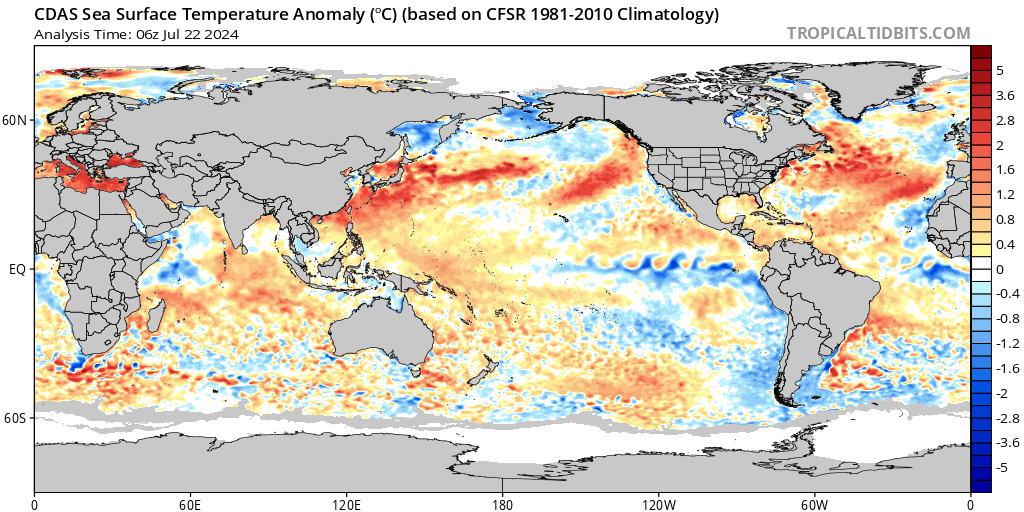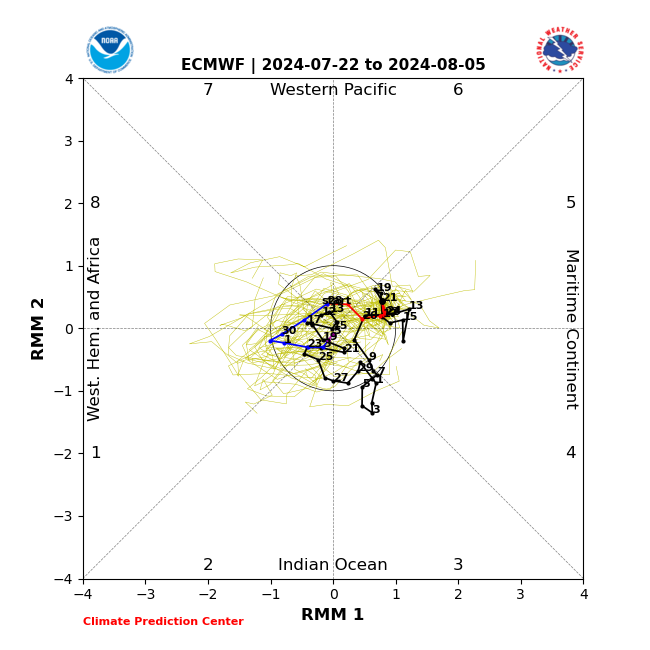The UK has experienced a notably poor summer this year so far, characterised by unseasonably cool temperatures, persistent rainfall, and a lack of the usual sunny spells that many look forward to. Various factors have contributed to this disappointing weather, from atmospheric conditions to broader climatic trends. Let’s explore the primary reasons behind the UK’s dismal summer.
1. Impact of La Niña
The global climate phenomenon known as La Niña can also influence UK weather. La Niña, characterised by cooler-than-average sea surface temperatures in the central and eastern Pacific Ocean, affects weather patterns worldwide. During La Niña events, the UK can experience cooler and wetter conditions, which aligns with the weather seen this summer. Although La Niña’s direct effects are more pronounced in other parts of the world, its influence can still reach the North Atlantic region. Although well on the way, we are not in “La Nina” yet but we are in a flip year (El Nino to La Nina) and historical analogue’s do suggest poor winters in these years.

4. Atmospheric Water Vapor
The eruption of the Hunga Tonga-Hunga Ha’apai volcano in January 2022 released unprecedented amounts of water vapor into the stratosphere, this due to the volcano being underwater as it erupted.. This event has had potential implications for global weather patterns due to the injection of such a large volume of water vapor, which can affect atmospheric temperatures and circulation.
A recent study of long-term climate impacts of large stratospheric water vapor suggests in fact, that this unprecedented level of water vapour may actually bring about cooler and wetter summers from years 3 to 7 after the event. We are only in two and a half years after this event but we may already be feeling the effects.


3. Atmospheric Circulation Patterns
One of the significant contributors to this year’s poor summer weather is the position and behaviour of the jet stream. The jet stream is a fast-flowing ribbon of air high in the atmosphere that influences weather patterns. This summer, the jet stream has been positioned further south than usual. When the jet stream is located to the south of the UK, it often brings cooler air and unsettled weather from the Atlantic Ocean, leading to increased rainfall and lower temperatures. Either of the above could be a contributor to the jet running south.
4. Atlantic Weather Systems
As a result of the jet running south the UK is frequently impacted by weather systems originating from the Atlantic Ocean. This year, a series of low-pressure systems have been moving across the Atlantic and affecting the UK. These systems are associated with cloudy skies, rain, and cooler temperatures. The persistent nature of these low-pressure systems has prevented the establishment of prolonged high-pressure areas, which are typically associated with dry, sunny weather.
5. Quiet Tropics
Tropical thunderstorm activity measured using the MJO (Madden-Julian Oscillation) has been very quiet through the last few months. This isn’t unusual when a La Nina is developing but the lack of activity can result in weather patterns becoming stuck or repetitive. Without the usual nudge from the tropical thundery activity then we simply have reduced atmospheric variability. From the image below if you follow the black line it has been stuck in the circle of doom for much of summer, only briefly shifting out before becoming a recluse again. The forecast yellow ensemble lines dont inspire much confidence of a change.

So in summary all of the above could be contributing to the poor summer we have experienced thus far. Some of the above was forecast to have such impacts by myself (premium members knew) so its no surprise to me how this summer has gone.




